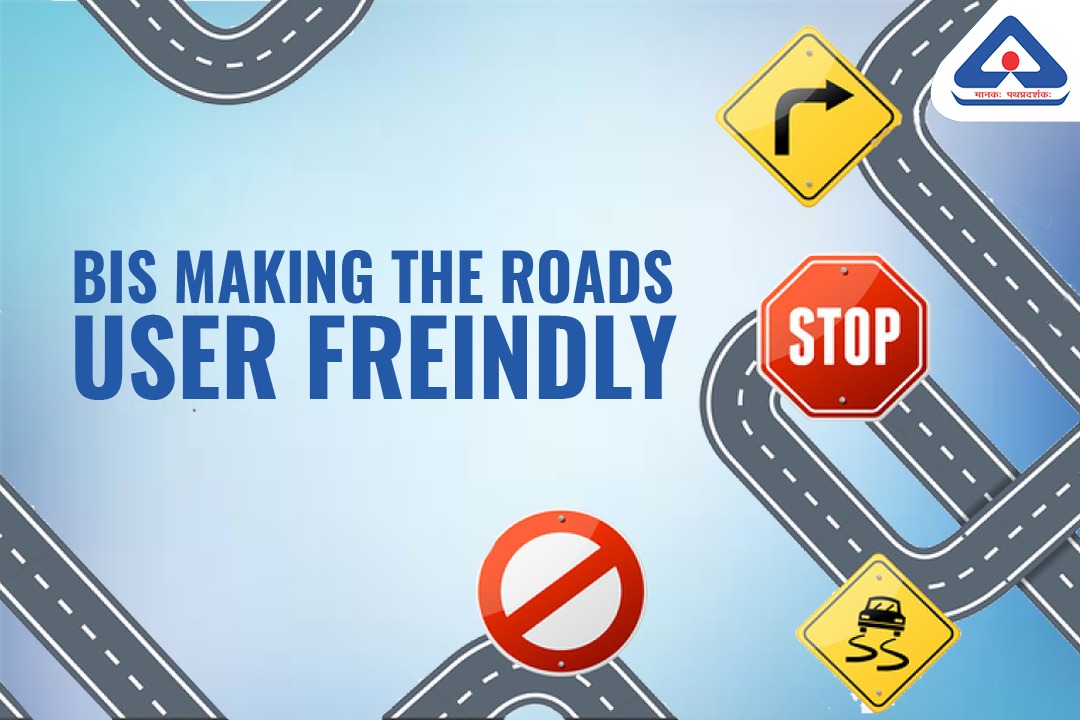

INTRODUCTION
In today’s connected world, transportation has become an integral part of each of our lives. As the existing transport system is incapable of handling the ever-increasing congestion and the challenges posed on a daily basis, efforts towards minimizing the congestion and fostering faster and cheaper alternatives are underway. Amidst the rapid development of rural and urban transport networks in India, one aspect that has often been neglected is Road Traffic Safety.
India is currently the 4th largest passenger vehicle market in the world, with the market size only expected to grow gradually in the times to come. As per a report from McKinsey, India is set to emerge as the world’s third-largest passenger vehicle market in the next three years. With a bigger market size, the challenges posed are only expected to grow.
Stretching to over 5 million kilometers, India’s roads are the second largest network in the world. A mix of vehicles combined with unsafe road infrastructure and vehicle’s poor condition gives way to high fatality rates on Indian roads. As per a report by the Ministry of Road Transport & Highways (MoRTH), the total number of road accidents has seen an increase of 2.5 percent from 2014 to 2015, from 4,89,400 to 5,01,423. The total number of persons killed in road accidents increased by 4.6 percent from 2014 to 2015, from 1,39,671 to 1,46,133. The report revealed that there were 4,80,652 road accidents resulting in 1,50,785 casualties, apart from the gravely injured. Further, an estimated 3% of the country’s GDP is lost because of road traffic accidents. It also mentioned that India’s National Highways constitute around 2% of the total country’s road network and account for 29.6% of total road accidents and 34.5% of the fatalities. In the year 2016, the youth of age group 18-45 accounted for 68.6% of the total fatalities. This situation is quite serious and questions many aspects of road safety awareness and law enforcement.
It is high time to address the elephant in the room and which is why the Government of India has put necessary resources, programs, and legislation to improve the road safety scenario in the country and it is time that all become key stakeholders in this initiative and work towards achieving the goal of zero casualties.
CHALLENGES IN INDIA
Like every nation, India has its own share of unique impediments in its goal of achieving zero casualties. Some of these are highlighted below:
Use of personalized vehicles over public transport
Sustained economic growth has led to an enhanced purchasing power, which subsequently has led to rapid motorization. As per a MoRTH report, during the period 2005 to 2015, the highest CAGR was recorded by cars, jeeps, and taxis (10.7%), followed by two-wheelers ( 10.1%), goods vehicles (8.8%) and buses (8.2%). Two-wheelers (73.5 %) constitute the highest fraction of vehicular population followed by cars, jeeps, and taxis (13.6 %), other vehicles (7.5 %), goods vehicles (4.4%) and buses (1.0 %). Also comparing the CAGR of newly registered vehicles, which stands at 9.8%, with that of the CAGR of the length roads increased in the period 2005 to 2015, which is 3.%, it is evident that the rate of motorization has been highly disproportionate.
Awareness
Another major factor when it comes to lack of Road Safety happens to be a lack of awareness among road users. Non-compliance to laws such as the use of helmets, seat belts, maintaining speed limits, avoiding driving under inebriated state, etc. along with poor awareness regarding the road signage and pictorial symbols is a major contributor to fatalities.
Infrastructure
It is often said that improper design of road and infrastructure is a more serious threat than human error alone. It is an established fact that the current infrastructure is inadequate to sustain the levels of motorization in urban centers of India. The new infrastructure so designed must also be intelligent, with the aid of technology, in order to tackle the problems to be faced in the future. Further, the infrastructure has to be user-friendly and must give emphasis on road signage, warnings, pedestrian and differently-abled community-friendly crossings, etc.
Need for proper data recording system
Recording and accessing the road traffic data ensures that the necessary lessons are learned and averted in the future. The various stakeholders like the Government, Police, Ministry (MoRTH), National Highway Authority of India (NHAI), Original Equipment Manufacturers (OEMs), NGOs, Local Municipality, Hospitals, Emergency medical services, etc, on a common platform, is something that needs to be given a thought.
Enforcement of law and legislations
Traffic rules and awareness are a medium to ensure orderliness on the road. With a large proportion of the country’s population belonging to the youth category, it is the right time to make the road users conversant with the existing road laws in the country & also look into strict enforcement of the existing laws.
ROAD SAFETY INITIATIVES IN INDIA
The Government of India has identified the importance of road safety and various initiatives have been taken. The Government is putting efforts to identify the key areas where the emphasis needs to be laid to ensure road safety.
The Motor Vehicle (Amendment) Bill 2016 introduced by MoRTH in Parliament addresses road safety issues by ensuring stricter penalties, allowing electronic enforcement, improving fitness certification and licensing regime, statutory provisions for the protection of good Samaritans and recognition of IT enabled enforcement systems. Reports suggest that all these have led to lesser traffic violations and repeat offenders. Another report by MoRTH says that Regional Transport Offices in 36 States/Union Territories have been connected through the IT networks in order to issue Vehicle Registration Certificates (VAHAN) and Driving Licenses (SARTHI).
The Road Safety Cell (Engineering) (RSCE) established by MoRTH in 2015 to work on Road Safety Engineering, identifies and rectifies road accident blackspots and carries out frequent road safety audits to improve road accident data collection and training of Highway engineers and professionals.
Further, the government is also contemplating mandating the passenger vehicles to comply with bare minimum safety features such as Anti-Lock Braking System and Speed warning audio alert, seat belt audio alerts and reverse sensors for four-wheelers. Further, helmets to be provided as a compulsory accessory at the time of sale of all new two-wheelers is also something being deliberated upon.
ROLE OF STANDARDS IN ROAD SAFETY
Road safety is a very important aspect that comprises road design, road construction methods, vehicle safety standards, guidelines on traffic management, etc. Standards on safety and otherwise play a central role in ensuring road safety. Bureau of Indian Standards (BIS) is a National Standard making body which is involved in the harmonious development of standardization activities, marking and quality certification of goods and services in India. Transport Engineering Department, a technical department of BIS which is working on the standard formulation in the field of transport engineering and has developed standards and guidelines on the safety equipment of automobiles.
BIS has successfully launched the Management System certification against IS/ISO 39001: 2012 ‘Road Traffic Safety (RTS) Management Systems – Requirements with Guidance for Use’. This standard specifies the requirements of the system to any organization dealing with road traffic systems to reduce death and serious injuries from road traffic crashes which it can influence and through this help, the organization reaches its objectives. Any organization irrespective of its type, size, product or service can benefit from this standard and improve it RTS performance, establish, maintain and implement, improve their RTS management system, ensure its conformity to the policy and demonstrate it with International Standard.
The Intelligent Transport Systems Sectional Committee, TED 28 is responsible for developing Indian Standards in the field of Road Traffic Safety Management Systems. This national mirror committee has adopted the standard formulated by ISO/TC 241 IS/ISO 39001: 2012 ‘Road Traffic Safety (RTS) Management Systems — Requirements with Guidance for Use’. The ISO secretariat is also working on ISO/CD 39002 – Good practices for implementing commuting safety management, which may be deliberated by the national mirror committee for its adoption in the future.
BIS is also taking initiatives to promote awareness of road safety through various campaigns. Further, to mark the road safety week, BIS, in the month of January 2019 initiated a campaign through its social media, to promote its standards on Road Safety, such as IS 14221 – Automotive vehicles – Retro Reflective Sheets and Tapes, IS 4151 – Protective Helmets for Two Wheeler Riders, IS 16694 Automotive vehicles – Safety belts, Restraint Systems, and Safety Belt Reminder – Installation requirements, etc.
CONCLUSION
Rapid urbanization and the need for rapid enhancement of transport infrastructure have posed a serious challenge on the issue of achieving road safety. Active participation at individual and government levels is important and so its implementation of traffic rules on a pan India basis and stringent quality standards on vehicle safety. Continuous identification of traffic issues and actively resolving them will definitely make our roads and vehicles safer and help us reach zero fatalities sooner than later.
Written by:

Gaurav Raj
(YP, TED)

Tushit Kamal
(Sc-B, TED)
Comments
Title : One thought on “BIS making the roads user friendly”
Awesome Content of this blog, Thanks for sharing this information with us.